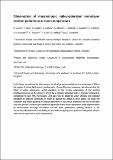Files in this item
Observation of macroscopic valley-polarized monolayer exciton-polaritons at room temperature
Item metadata
| dc.contributor.author | Lundt, N. | |
| dc.contributor.author | Stoll, S. | |
| dc.contributor.author | Nagler, P. | |
| dc.contributor.author | Nalitov, A. | |
| dc.contributor.author | Klembt, S. | |
| dc.contributor.author | Betzold, S. | |
| dc.contributor.author | Goddard, J. | |
| dc.contributor.author | Frieling, E. | |
| dc.contributor.author | Kavokin, A.V. | |
| dc.contributor.author | Schüller, C. | |
| dc.contributor.author | Korn, T. | |
| dc.contributor.author | Höfling, Sven | |
| dc.contributor.author | Schneider, C. | |
| dc.date.accessioned | 2017-11-10T11:30:15Z | |
| dc.date.available | 2017-11-10T11:30:15Z | |
| dc.date.issued | 2017-12-05 | |
| dc.identifier | 251515695 | |
| dc.identifier | dd8272aa-586b-4d69-afeb-279ca04d7fb4 | |
| dc.identifier | 85039426230 | |
| dc.identifier | 000417077000002 | |
| dc.identifier.citation | Lundt , N , Stoll , S , Nagler , P , Nalitov , A , Klembt , S , Betzold , S , Goddard , J , Frieling , E , Kavokin , A V , Schüller , C , Korn , T , Höfling , S & Schneider , C 2017 , ' Observation of macroscopic valley-polarized monolayer exciton-polaritons at room temperature ' , Physical Review. B, Condensed matter and materials physics , vol. 96 , no. 24 , 241403(R) . https://doi.org/10.1103/PhysRevB.96.241403 | en |
| dc.identifier.issn | 1098-0121 | |
| dc.identifier.uri | https://hdl.handle.net/10023/12047 | |
| dc.description | Funding: the State of Bavaria and the ERC (unlimit-2D), the DFG via SFB689, GRK 1570 and KO3612/1-1. | en |
| dc.description.abstract | In this Rapid Communication, we address the chiral properties of valley exciton-polaritons in a monolayer of WS2 in the regime of strong light-matter coupling with a Tamm-plasmon resonance. We observe that the effect of valley polarization, which manifests in the circular polarization of the emitted photoluminescence as the sample is driven by a circularly polarized laser, is strongly enhanced in comparison to bare WS2 monolayers and can even be observed under strongly nonresonant excitation at ambient conditions. In order to explain this effect in more detail, we study the relaxation and decay dynamics of exciton-polaritons in our device, elaborate the role of the dark state, and present a microscopic model to explain the wave-vector-dependent valley depolarization by the linear polarization splitting inherent to the microcavity. We believe that our findings are crucial for designing novel polariton-valleytronic devices which can be operated at room temperature. | |
| dc.format.extent | 1003581 | |
| dc.language.iso | eng | |
| dc.relation.ispartof | Physical Review. B, Condensed matter and materials physics | en |
| dc.subject | QC Physics | en |
| dc.subject | T Technology | en |
| dc.subject | NDAS | en |
| dc.subject.lcc | QC | en |
| dc.subject.lcc | T | en |
| dc.title | Observation of macroscopic valley-polarized monolayer exciton-polaritons at room temperature | en |
| dc.type | Journal article | en |
| dc.contributor.institution | University of St Andrews. School of Physics and Astronomy | en |
| dc.contributor.institution | University of St Andrews. Condensed Matter Physics | en |
| dc.identifier.doi | https://doi.org/10.1103/PhysRevB.96.241403 | |
| dc.description.status | Peer reviewed | en |
This item appears in the following Collection(s)
Items in the St Andrews Research Repository are protected by copyright, with all rights reserved, unless otherwise indicated.

